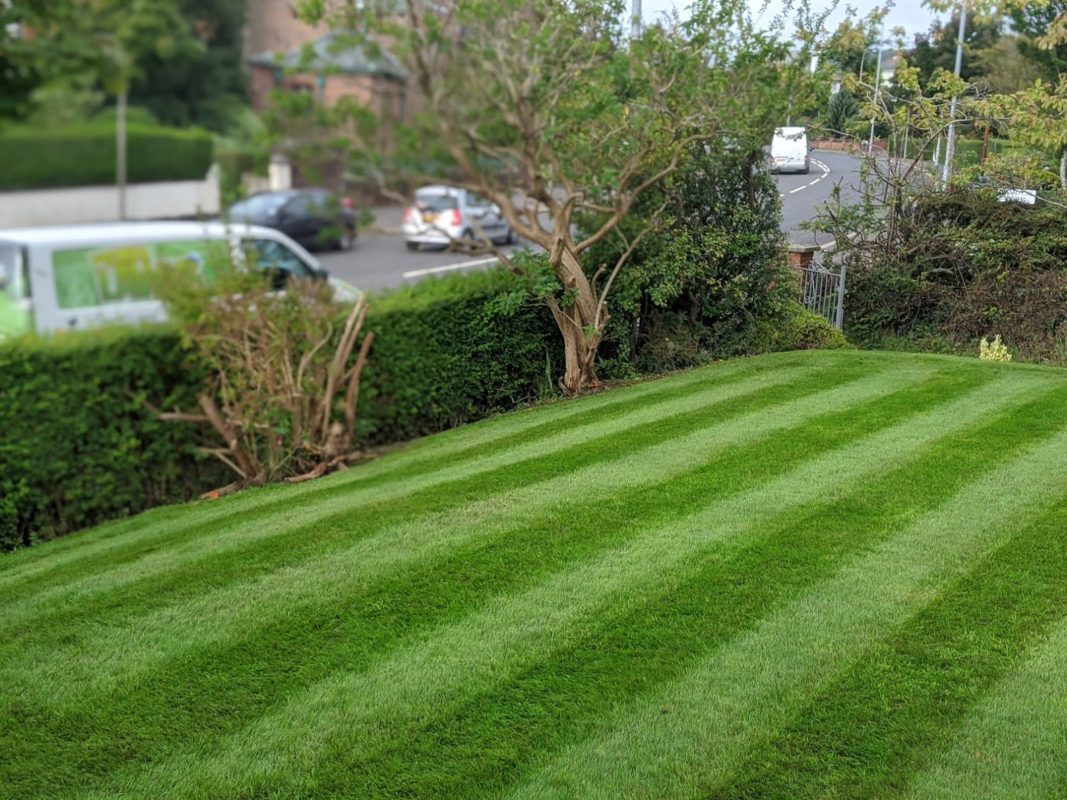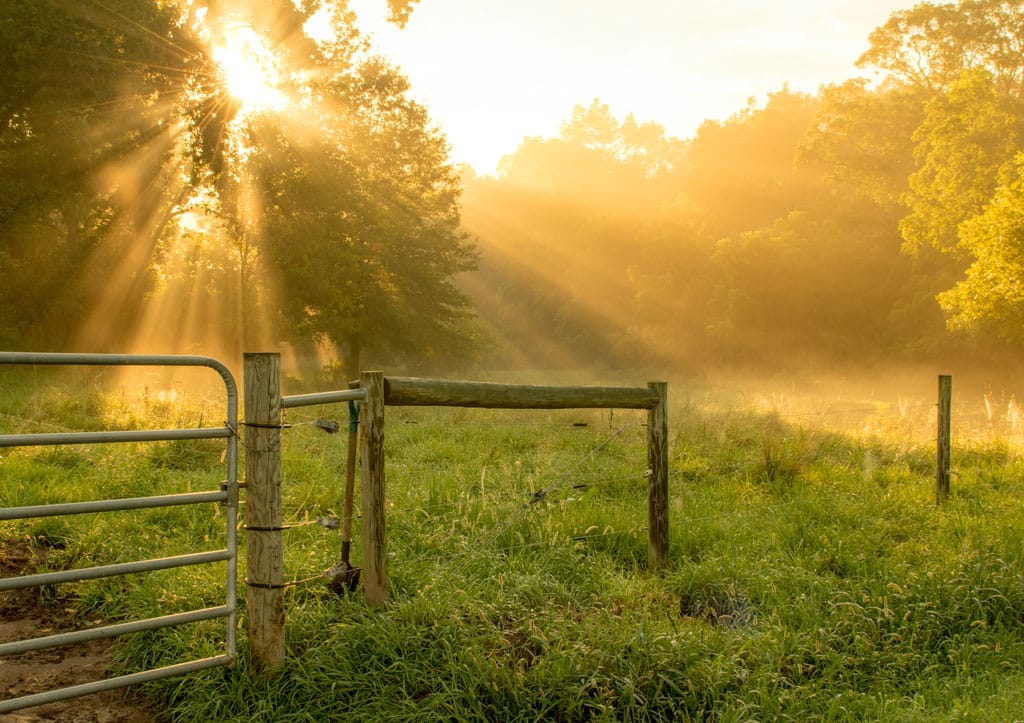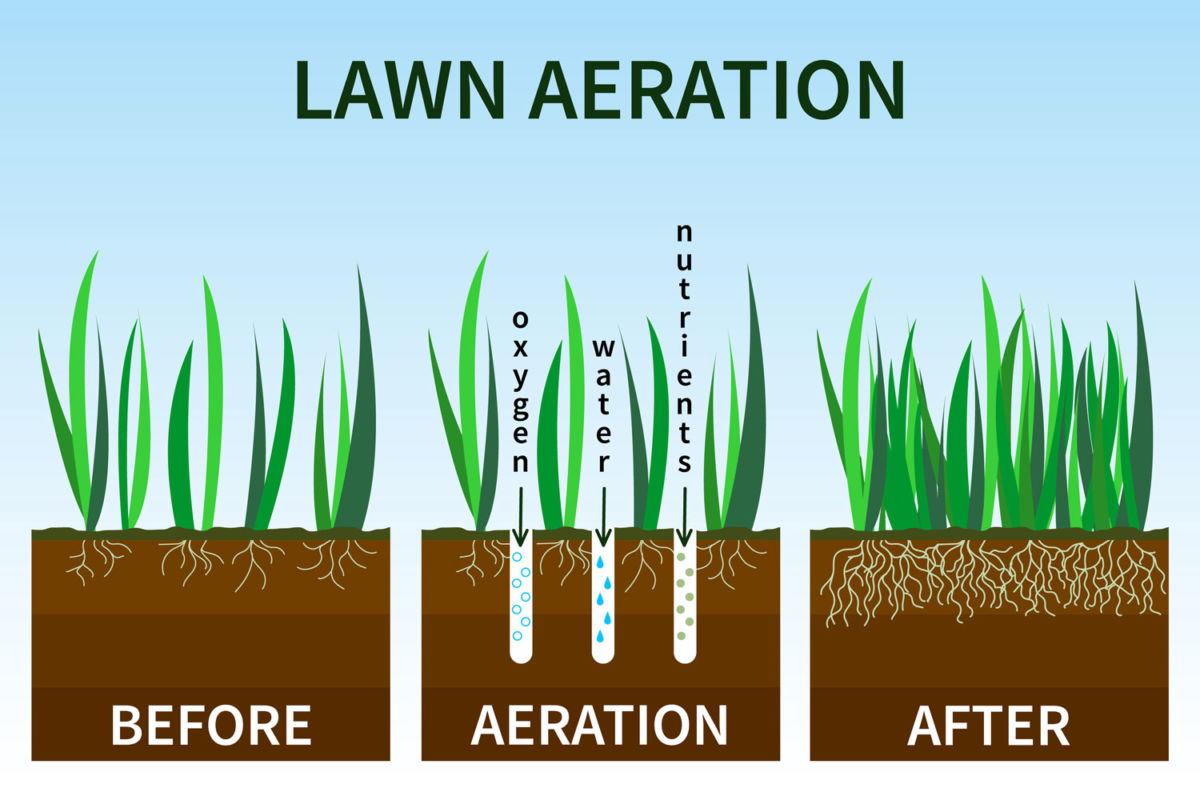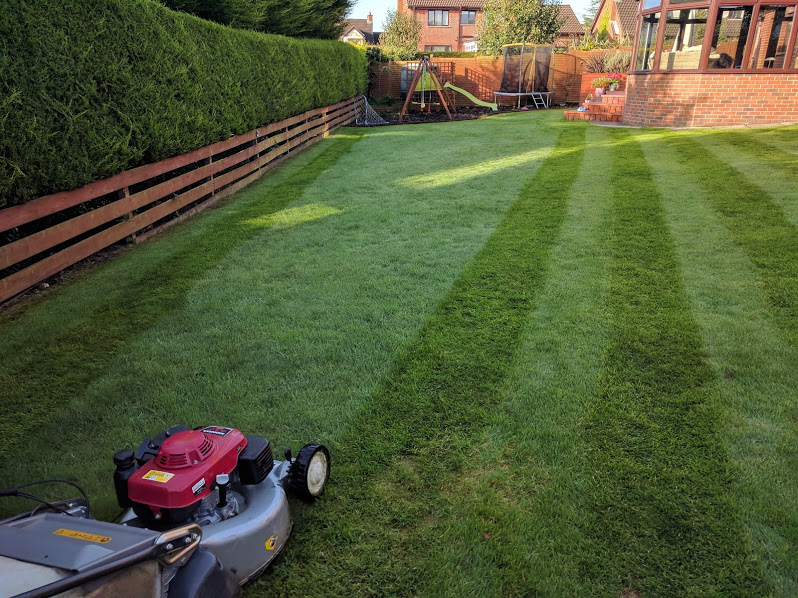Creating your perfect lawn needn’t be complicated if you understand the basics behind good lawn care. Here’s a simple explanation of the science and psychology that sets the rules for easy lawn maintenance.
- Your lawn is alive -which means that it has a set of basic needs that need to be met from season to season.
- Every lawn is unique – don’t beat yourself up if it doesn’t look like a show garden – create the lawn that suits your garden and your lifestyle.
- Following a very simple and regular lawn care regime will dramatically improve the way your lawn looks and performs.
- There is an overwhelming amount of lawn care products for sale in garden centres – learn what your lawn actually needs so that you don’t succumb to the marketing blurb
- Lawn care is one big learning curve. If something doesn’t go right this season, don’t worry, think about your lawn on a long term basis, if you follow the rules it’ll get better every year.

What does a lawn need to help it thrive?
Grass is arguably one of the most robust plants we have in the UK….maybe even the world. It seems to grow just about anywhere. In cracks in the pavement, on mountain tops, on soggy ground – anywhere. But for grass to be a lawn, we expect it to look and behave in a certain way.
Everybody’s idea of the perfect lawn is different. But for the most part we want dense plant coverage – with no soil showing. A nice even length without tufts or clumps. A consistent colour – no pale green, yellow or brown areas to spoil the look of the lawn.
In nature, grassland doesn’t look like a lawn, so how do we achieve all of the things on our wishlist?
Lawns need:
- Soil
- Water
- Food
- Sunlight
Very basic requirements and grass can survive with surprisingly poor soil and with little food and water – but it won’t necessarily look like a lawn. To create a lawn, we need to provide the plants with the best possible growing conditions.
Lawn grass vs wild grass

Unwanted plants
In nature, the growing conditions suit lots of different plant species not just grass, because if there’s one thing Mother Nature seems to hate, it’s a monoculture. So if you want your lawn to be free from wildflowers, you need to create growing conditions that don’t suit the plants you don’t want.
Sward thickness
Delve deep into something like an unmanaged pasture or a road verge and you’ll see that the grass plants are spaced widely apart. That’s nature’s way of making sure none of the plants are starved of water or nutrients – there is only so much food to go around.
To encourage a really thick sward of grass in your lawn – feed it regularly so that individual plants don’t need to compete with their neighbours for nutrients.
Correct species mix
‘Wild’ grasses tend to have wide, coarse leaves to gather as much sunshine as possible. These plants don’t really enjoy being cut on a regular basis either. No farmer will allow his livestock to eat the grass right down to the ground – the plants just wouldn’t thrive. Pasture gets rested from time to time so that the grass can recover. Your lawn on the other hand is mown regularly.
Choose your grass seed carefully – if you sow agricultural grasses, your ‘lawn’ will look like a cow field.
Optimum soil conditions
Grass has roots and roots need space to grow, provide the plants with water and harvest nutrients. Roots also need oxygen. So for the strongest, healthiest grass plants, give them a good depth of quality soil to grow in. For wild grasses this is rarely the case, which is why they don’t look like lawns!
Be aware that every time you walk on the lawn, you will be damaging the soil structure. So aerate your lawn once or twice a year to make repairs.

Lawn Nutrition
Unmanaged pastures and road verges are rarely given any fertiliser. If you want to encourage wildflowers to grow – that’s great because the needs of wildflowers are completely opposite to the needs of lawn grasses. Wildflowers like nutrient poor soil and minimal mowing. A lawn thrives when it it well fed and regularly cut.
There’s a lot of scientific research that goes into lawn nutrition but unless you are managing a golf course or a sports stadium, you don’t need to worry yourself too much about the details. All you need to know is that mowing ‘steals’ nutrients from your lawn and so it’s up to you to replace them. Feed your lawn regularly – at least once every season – with a good quality lawn feed. And make sure you use the right feed for the time of year.
Sunlight
I see lots of discussion on the Premier Lawns Facebook Community about growing lawns in the shade. It can be challenging because grass needs sunlight to survive. You see grass uses energy from the sun to turn carbon dioxide and water into carbohydrates. Those carbohydrates fuel growth and repairs within the plant. Without them, the grass gets weak.
The basics behind good lawn care include making sure that your grass plants can harvest enough sunlight to support themselves. For shaded lawns, that usually means a combination of keeping trees and hedges trimmed and maintaining the lawn at around 5-8cm long……longer than ‘normal’ so that you maximise the surface area of the leafs that can harvest sunshine.
The basics behind good lawn care – a regular regime
There are two things that a beautiful lawn needs on a regular basis. Mowing and feeding. If those are the only two things in your lawn care regime, your garden will certainly thank you for them.
Mowing
Mowing little and often encourages the plants to ‘tiller out’. Think about wild grasses for a moment – they tend to have five or six leaves to a plant. Lawn grass plants on the other hand, often have double that number. Why? Because mowing nips the growing tips off the plant and encourages it to become more bushy.
Allowing grass to become overly long and then scalping it, has the opposite effect to mowing little and often. It weakens the grass, confuses it’s growth hormones, and takes away it’s food store. If you can’t mow at least once a week during the mowing season, think about investing in a robot mower to do the job for you.
However you decide to mow your lawn, always remember the 1/3 rule.
Feeding your lawn
It’s incredibly easy to forget to feed your lawn, so the one thing I urge you to do, is mark on your calendar or set a reminder to get the job done. It doesn’t take long and if you don’t feel confident, you can hire a professional to help you.
Your grass grows all year round – even if there doesn’t seem to be much movement above ground, the roots will be growing and working deep in the soil.
Think of lawn food as fuel and medicine – just as a balanced diet is important for your health and wellbeing, plant nutrients have several functions. They’re not just about promoting growth they’re about giving your plants what they need to build a strong immune system, to cope with bad weather and to put up with being mown unnaturally short.
The most important thing you need to remember about lawn feed – other than do it regularly – is to cut down the amount of nitrogen you apply between October and March. Nitrogen is like fast food for plants. If they have too much of it at the wrong time, they’ll grow big – but they won’t grow strong!
I’ll post a link at the bottom of this article to a blog that explains lawn feeding in greater detail. Please read it. Once you understand what to feed and when, you can make wise choices when buying your fertiliser.
Lawn care is a learning curve

For your own peace of mind, know that no matter how well you understand and apply the basics behind good lawn care, Mother Nature will always have a surprise up her sleeve for you.
I’ve been creating and improving lawns for over thirty years and I’m still learning! The truth is, like anything in nature, every lawn is different. We each need to learn what works best for our patch…..and then be prepared for that to change every year.
No two years are the same in lawn care. Because you simply cannot control all of the elements that affect the way your lawn looks.
If it rains for weeks in the winter and the lawn beneath your lawn becomes so waterlogged that the plants look yellow – that’s not your fault. Aerating when the lawn dries out will help the lawn to drain better but if the water table is only half an inch from the surface there’s not much you can do about it.
Crane flies decide to lay their eggs on your lovely lawn and you wake up one morning in spring to find that the grass has all died. Again – it’s not your fault, your lawn and your garden is all part of a much wider ecosystem and even though it’s frustrating at times, it is something to celebrate.
As you start applying the basics behind good lawn care you’ll learn more and more about your space and how to care for it. Enjoy the learning – you’ll be surprised how you can apply it to other parts of your garden too.
Useful links
Subscribe to Premier Lawns YouTube Channel for regular, easy to follow lawn care tips
Feeding your lawn – what to feed and when
Your lawn care calendar – a month by month guide to applying the basics behind good lawn care.

